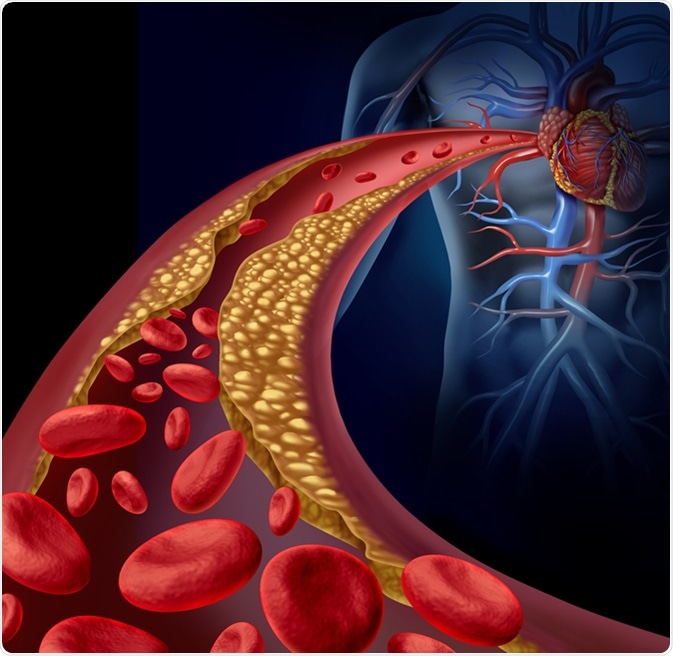Blood flows through the blood vessels to deliver the needed oxygen and nutrients to the different cells in the body. The blood clotting process or coagulation is an important process that prevents excessive building in case the blood vessel becomes injured. It plays a crucial role in repairing blood vessels.
What is Blood Clotting?
Otherwise known as blood clotting, coagulation plays a pivotal role in the repair of blood vessels. The heart pumps blood throughout the body with the aid of the arteries, and in turn, blood goes back to the heart through the veins. When the blood vessels become injured, it will trigger the blood clotting process. This way, the body will repair the damage to stop hemorrhage or bleeding from happening.
For instance, the damage happens in the lining of the blood vessels, the platelets will form an initial plug on the affected area. They will initiate the clotting process with the aid of certain clotting factors produced in the body.

Clogged artery and atherosclerosis disease medical concept with a three dimensional human artery with blood cells that is blocked by plaque buildup of cholesterol as a symbol of vascular diseases. Image Credit: Lightspring / Shutterstock
What are Clotting Factors?
Clotting factors are components found in plasma that are linked to the blood clotting process. These factors are named and numbered based on their discovery. Though there are a total of 13 numerals, there are only 2 clotting factors. Factor VI was discovered to be part of another factor.
The clotting factors are Factor I (fibrinogen), Factor II (prothrombin), Factor III (tissue thromboplastin or tissue factor), Factor IV (ionized calcium), Factor V (labile factor or proaccelerin), Factor VII (stable factor or proconvertin), and Factor VIII (antihemophilic factor). Additionally, the coagulation factors also include Factor IX (plasma thromboplastin component or the Christmas factor), Factor X (Stuart-Prower factor), Factor XI (plasma thromboplastin antecedent), Factor XII (Hageman factor), and Factor XIII (fibrin-stabilizing factor).
The liver uses vitamin K to produce some of the factors such as Factors II, VII, IX, and X. Normally, vitamin K can be consumed through the diet from plant and animal sources. The normal flora of the intestine also produces vitamin K.
Blood Clotting Process
Hemostasis is a way of the body to stop injured blood vessels from bleeding. One of the most important parts of hemostasis is the clotting of the blood. Subsequently, the body needs to control the mechanisms to control and limit clotting. These include dissolving excess clots that are not needed anymore. When there is an abnormality in any part of the system that controls bleeding, it can lead to hemorrhage or excessive clotting. These are potentially life-threatening.
Too much clotting can lead to stroke and heart attacks because blood clots can travel and clog the vessels. On the other hand, poor clotting can lead to severe blood loss even with just a slight injury to the blood vessels.
Hemostasis has three major processes namely the constriction of blood vessels, activity of the platelets, and activity of the proteins found in blood (clotting factors).
Injury
The first phase of the blood clotting process is injury or when a blood vessel becomes damaged. This can be in the form of a small tear in the blood vessel wall that may lead to bleeding.
Blood Vessel Constriction
The body will constrict the blood vessel to control blood loss. It will limit the blood flow to the affected area.
Platelet Plug
In response to the injury, the body activates platelets. At the same time, chemical signals are released from small sacs in the platelets to attract other cells to the area. They make a platelet plug by forming a clump together. A protein called the von Willebrand factor (VWF) helps the platelets to stick together.
Fibrin Clot
When a blood vessel becomes injured, the coagulation factors or clotting factors in the blood are activated. The clotting factor proteins stimulate the production of fibrin, which is a strong and strand-like substance that forms a fibrin clot. For days or weeks, this fibrin clot strengthens and then dissolves when the injured blood vessel walls close and heal.
Blood clotting is a crucial process that can help prevent blood loss due to injury. If there is an abnormality in any part of the process, it can lead to dangerous complications such as severe blood loss. Commonly, people with clotting disorders are closely monitored to prevent injuries and bleeding.
Further Reading